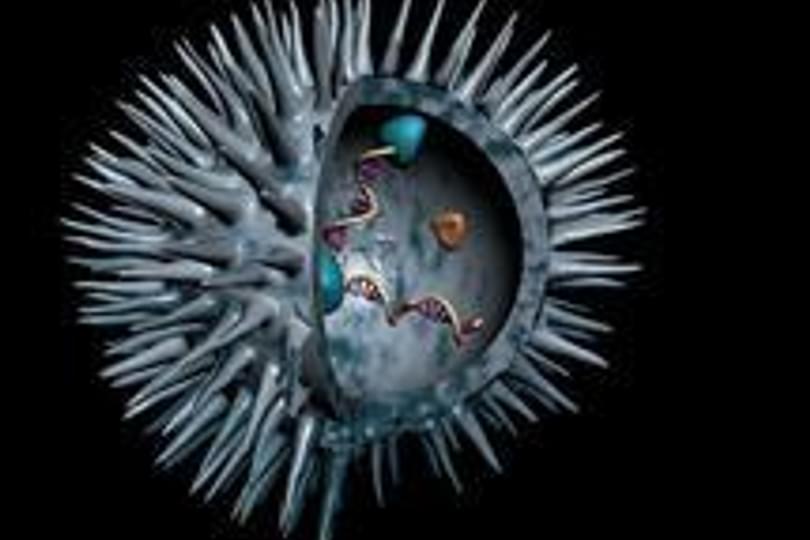
A 48-week course of antiretroviral medication taken in the early stages of HIV infection slows the damage to the immune system and delays the need for long term treatment, according to research published today in the New England Journal of Medicine. However, the delay was only marginally longer than the time already spent on treatment.
The study, the largest clinical trial ever undertaken to examine the effects of early HIV treatment, also suggests that the treatment lowers the amount of virus in the blood for up to 60 weeks after it is stopped, potentially reducing the risk of onward transmission.
SPARTAC (Short Pulse Anti-Retroviral Therapy at HIV Seroconversion), a randomised controlled trial, took place over five years and involved 366 adults – mainly heterosexual women and gay men – from Australia, Brazil, Ireland, Italy, South Africa, Spain, Uganda and the UK. It was funded by the Wellcome Trust and coordinated by researchers from Imperial College London and the Medical Research Council's Clinical Trials Unit, with immunology research conducted by the University of Oxford.
The Oxford team form part of the Oxford Martin School as the Institute of Emerging Infections co-directed by Professors Angela McLean and Rodney Phillips. Institute members will be involved in the follow up and further analysis of this major study.
This research into early treatment of HIV began in a laboratory headed by Professor Rodney Phillips at the University of Oxford in the late 1990s. Initial results, Professor Phillips explains, suggested that: ‘very early treatment of HIV infection, shortly after the virus was acquired, could avert some of the damage done to the patient's immune system. These findings also suggested that if this protective effect was sustained then the inexorable downhill course of the infection could be attenuated.’
To transfer these techniques from laboratory to clinic, Phillips teamed up with academics at Imperial College London with the aim of conducting clinical trials. Following further collaboration with the Medical Research Council and funding from the Wellcome Trust, this study became SPARTAC. Patient samples from across the four continents spanned by the study were processed at the Peter Medawar building, University of Oxford. Professor Phillips says: ‘Analysis of this material, coordinated by Dr John Frater, has yielded highly novel insights into the interaction between HIV, the human immune system and anti-HIV drugs.’
Unless regularly tested, most people will be unaware that they are HIV-positive during the first few years. Initial symptoms can be similar to flu or other viral infections, and for most people, there follows a period of many years when they carry the virus but are not sick. However, the immune system never successfully clears HIV; instead, the virus hides away, slowly weakening the body's defences and destroying CD4 T-cells, which play a key part in the immune response.
Without treatment, the immune system steadily becomes more compromised, leaving the individual at increased risk of developing other life-threatening infections. To stop this from happening, when the number of remaining CD4 T-cells reaches a certain level – 350 cells per cubic millimetre – international treatment guidelines recommend that an individual begins life-long treatment with antiretroviral drugs. These drugs not only prevent further damage to the immune system, but also allow it to recover.
All volunteers in the SPARTAC trial were identified within six months of becoming infected with HIV and were randomly allocated to receive antiretrovirals for 48 weeks, 12 weeks or to receive no medication (the standard practice in HIV management at this stage of infection). The researchers then measured the time until each volunteer's CD4 T-cell count fell below 350 cells per cubic millimetre and/or they began a lifelong course of antiretroviral medication.
The researchers found that on average, participants who had received no medication needed to begin taking a lifelong course of treatment 157 weeks after infection. Those in the group receiving antiretrovirals for 12 weeks began their lifelong course of treatment on average 184 weeks after infection – a delay of 27 weeks, but not considered by the researchers to be a significant effect.
Those volunteers who received antiretrovirals for 48 weeks took an average of 222 weeks before beginning long term treatment – a delay of 65 weeks. This represents an important delay compared with no treatment or 12 weeks of medication, but overall was not significantly longer than the time those participants had already spent on treatment.
In addition, over the whole time in the study, participants on the 48 week course had higher CD4 T-cell counts than those in the other two treatment groups, potentially reducing their risk of developing secondary infections such as tuberculosis (TB). They also had lower levels of HIV in the blood for over a year after stopping treatment compared to the other volunteers, which could play a role in reducing the risk of passing on the virus to sexual partners.
The researchers found no evidence that treatment within the first six months of infection led to the virus becoming resistant to the drugs or that coming off the course led to unexpected deaths or damage to the immune system.
- For more information visit the SPARTAC website.
- Read the paper in the New England Journal of Medicine
- More about the Institute for Emerging Infections